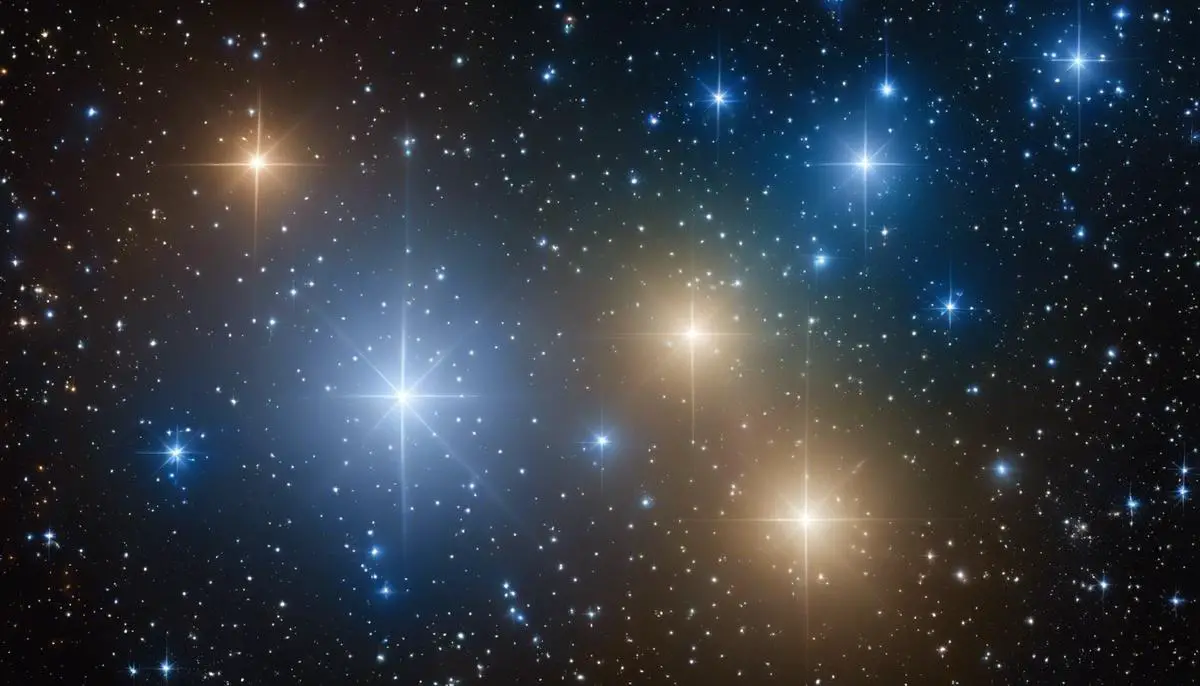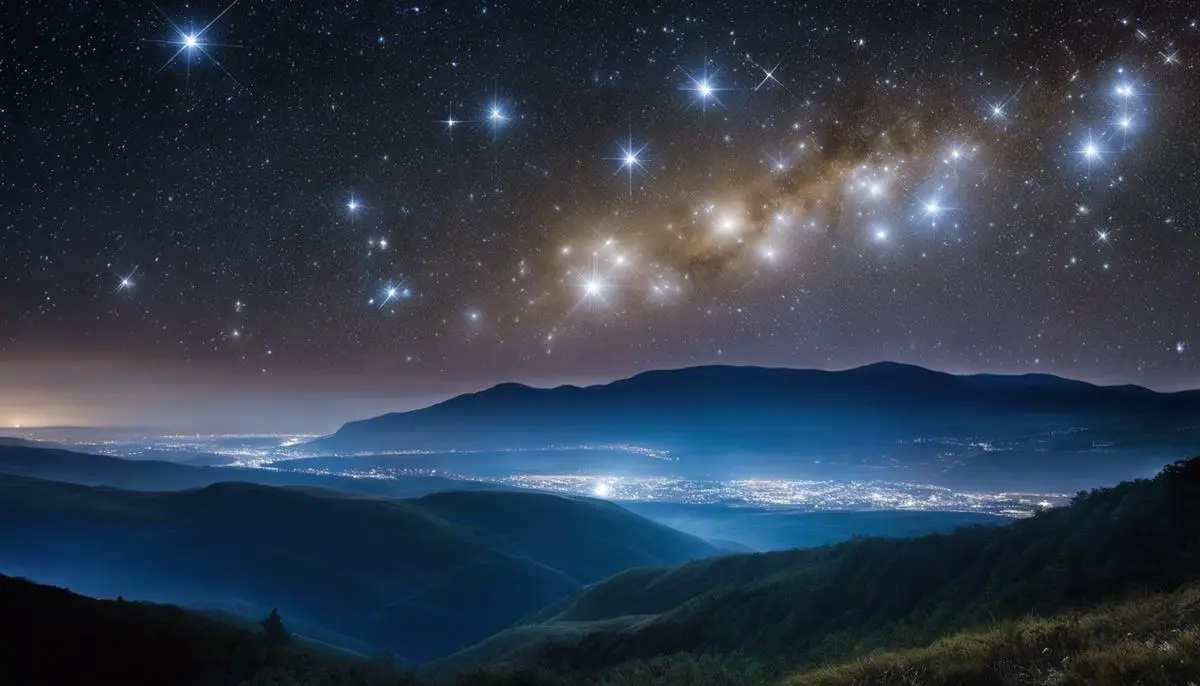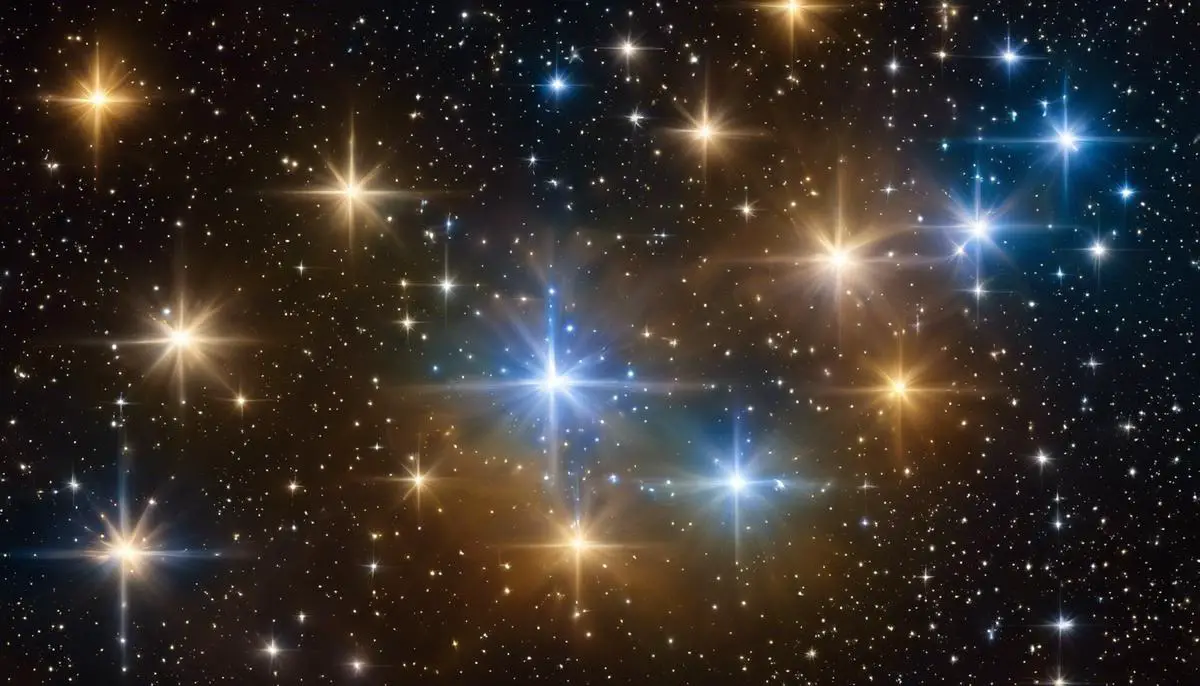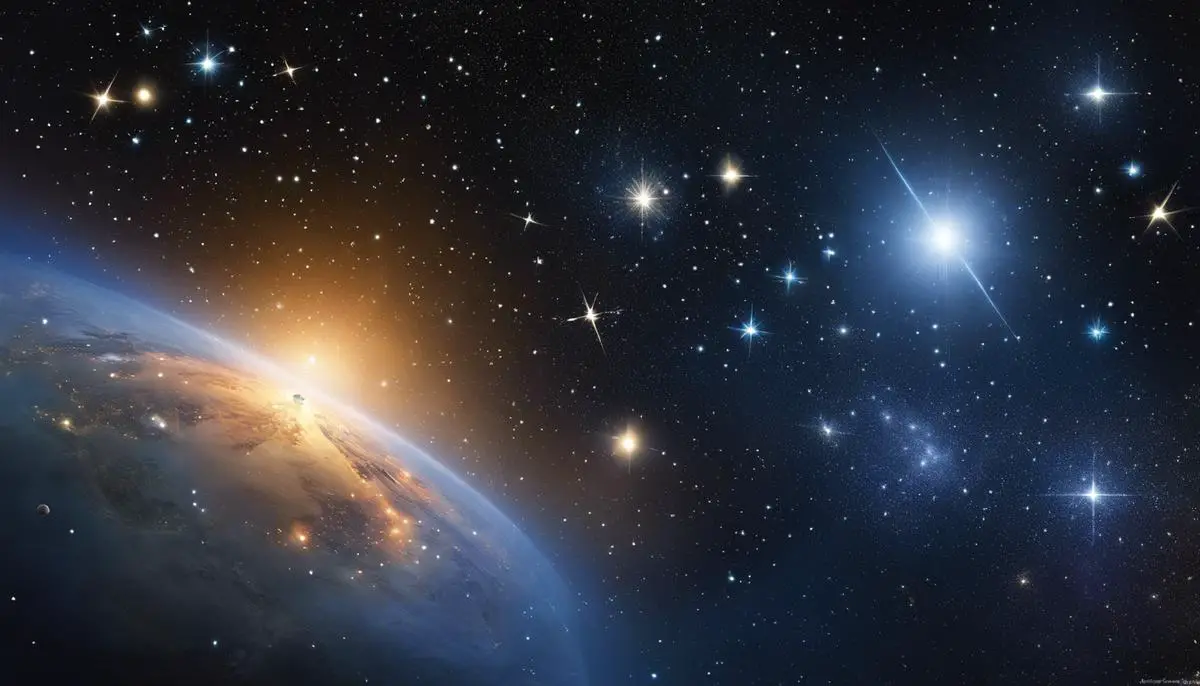Peering into the heavens, we uncover a celestial tapestry woven with a myriad of stars, each telling a tale of cosmic spectacle. Emphasized among these ethereal narratives is the tale of the Seven Sisters, better known as the Pleiades, a cluster of stars brightly illuminating the vast expanse of the Taurus constellation. As much as these stars provide astronomical insights, they are equally representative of humanity’s shared history and heritage, embodying countless cultures’ mythologies across the ages. This exploration delves into the scientific phenomenology of the Seven Sisters, the etymology of their names deeply grounded in Greek and Roman mythology, and their cultural and astronomic significance reflected across a variety of societies around the globe.
The Science Behind The Seven Sisters
The Seven Sisters, officially recognized as the Pleiades star cluster, holds a pivotal designation within the realm of astronomical science. This compact grouping of stars, discernible in the Northern Hemisphere during winter, emanates a unique brilliance which has tantalized scholars and researchers for generations. The name, derived from ancient Greek mythology, refers to the seven daughters of the titan Atlas and sea-nymph Pleione, though the cluster itself contains innumerable stars. Seven of the brightest stars in this cluster have been named after these mythological characters: Alcyone, Merope, Electra, Maia, Taygeta, Celaeno, and Sterope.
In terms of astrophysical attributes, The Pleiades stars are relatively young, at 100 million years old, and are shrouded in warm dust particles that contribute to their recognizably blue luminescence. The stars within this cluster are inextricable from one another, bound by their shared gravitational pull; a captivating illustration of celestial unity. They are situated in the constellation of Taurus, approximately 444 light years away from our planet, making them one of the nearest star clusters to Earth. This proximity adds to their prominence in the night sky and their continued influence on observational astronomy.
The Seven Sisters provide fertile ground for ongoing astronomical investigation. Their observed movements serve as a gauge for stellar distance measurement, a sub-discipline known as astrometry. Further, their spectral type signature – predominantly B-type (blue-white supergiant) and lesser contributions of G-type (yellow dwarf, akin to our Sun) – provide integral data for spectral classification, a fundamental aspect of astronomy research. This blend of captivating history and compelling scientific characteristics grants The Seven Sisters a paramount importance in the field of astronomy.

Names and Mythologies of The Seven Sisters
The Seven Sisters, often associated with the Greek mythology, have unique monikers and tales of origin, tightly bound within the Hellenistic literary and cultural corpus. Named as Alcyone, Merope, Celaeno, Taygete, Sterope, Electra, and Maia, these stars possess narratives that reverberate with the themes of intrigue, passion, and divine intervention. These motifs, predating the modern era by millennia, relate to the Pleiades’ deep cultural significance and enchant the observer with a sense of wonder and mystique about the celestial sphere.
Alcyone, often considered the ‘brightest’ sister, is named after a mythical figure who dared to challenge the gods and was consequently transformed into a kingfisher. Merope, the ‘lost Pleiad,’ derives her identity from a sorrowful nymph who married a mortal and dimmed, horrified by the punishment her sisters received as a consequence of attracting divine attention. Similarly, Celaeno, Taygete, Sterope, and Electra hold intriguing narratives – involving titans, Olympian gods, and mortals – that underpin their stellar monikers. Regarded as the eldest among all siblings, Maia distinguishes herself as the mother of Hermes, embodying the wisdom entitled to the firstborn.
Each individual star within the Pleiades cluster – the Seven Sisters – not only contributes to the perceptual beauty of this celestial feature but encapsulates within it, a snippet of ancient lore. The stories attached to these astral points reflect humanity’s attempt to imbue the cosmos with a sense of familiarity and a thread of continuity, linking our earthly existence with the vast, often intangible, universe. Through the Seven Sisters, we explore the virtues of mythology translated into the language of astronomy—an odyssey of mankind’s intrinsic need to find patterns, purpose, and meaning in the ‘silent fires’ punctuating the night sky.

Astronomical and Cultural Significance of The Seven Sisters
Beyond the Greek pantheon, the Pleiades have woven themselves into a variety of cultural tapestries across the globe, not simply as a celestial fixture but as an important cultural symbol. For example, many indigenous and ancient communities relied heavily on the Pleiades not just for navigation, but also as a rudimentary calendar. In Japan, they are known as ‘Subaru‘, signifying ‘gathered together’ and used as a brand name for their prominent car manufacturer. Similarly, Australian Aboriginal traditions foretold the approach of the colder season in the southern hemisphere by observing its dawn heliacal rising. The Jawoyn people in Northern Australia view the Pleiades as a group of young girls pursued by a man represented by Orion—illustrating the profound ways in which these star cluster have influenced global narratives.
Simultaneously, the Pleiades have proved themselves as heavyweight contenders in the scientific arena of astronomical studies. They represent intriguing specimens for the study of stellar evolution, specifically the early stages thereof. Containing stars in their infancy of a mere hundred million years old, analysis of the Pleiades presents a vibrant snapshot of cosmic childhood. Furthermore, their relatively close proximity to Earth, in astronomical terms, provides astrophysicists with a strategically advantageous observational platform. Particularly valuable is the cluster’s abundance of main sequence, blue-white B-type and yellow-orange K-type stars—a family portrait which penetrates the complex life cycles of varying stellar masses. Not to mention, the Pleiades’ cluster phenomenon also lends itself to studying dynamics of star movement and gravitational interactions within such groupings.
Thus, from a broader perspective, the Pleiades embody an enduring symbiosis between science and culture—an emblem of humanity’s ceaseless fascination with the cosmos. Even as we delved deeper into their astrophysical attributes, the Pleiades continue to fuel our cultural stories, weaving a tapestry of celestial understanding that spans scientific discovery and mythological narratives in equal measure. Utterly enchanting, both scientifically and culturally, the Pleiades, it seems, shine not solely in their brilliance as a star cluster but also as an epitome of human curiosity and intellect.

Despite their diminutive size in the grand cosmic theater, the Seven Sisters are far from insignificant. Their twinkling lights express a symphony of astrophysical processes while echoing age-old tales woven into humanity’s cultural fabric. As we appreciate their astronomical value to our understanding of stellar evolution and open clusters, we also reflect on the rich tapestry of global folklore and symbology they inspire. From Alcyone to Electra, every sister reveals a unique story, contributing to our comprehension of the universe and playing a distinctive role in our shared human saga. The heavens continue to captivate us, with the Seven Sisters epitomizing this intertwining of scientific knowledge and cultural heritage, reminding us that our exploration of the cosmos is not just a scientific endeavor, but also a journey deep into the heart of human experience.
![]()
